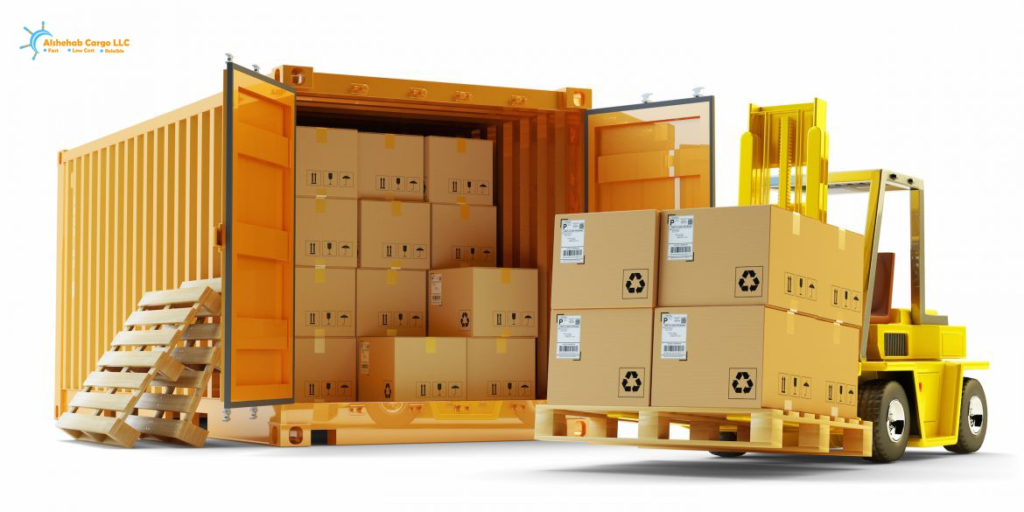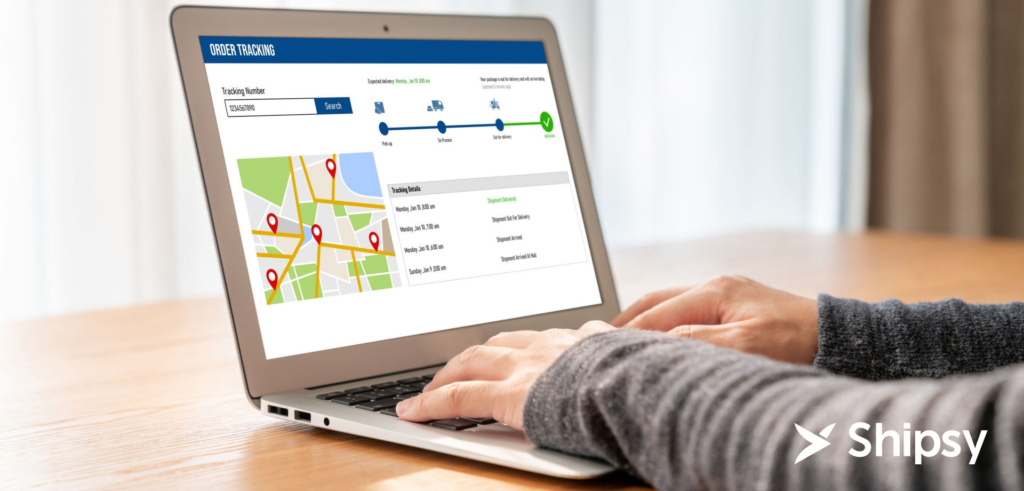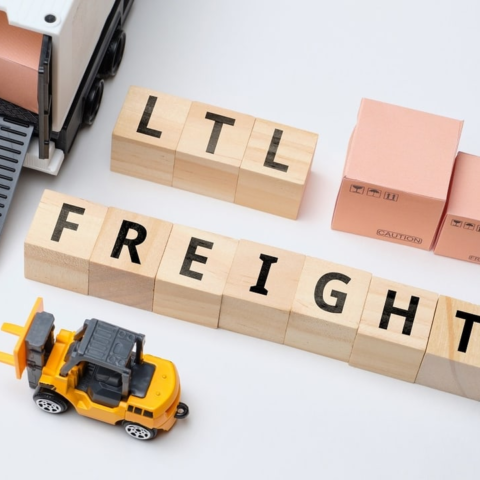Key Takeaways:
1. When choosing an LCL shipping company, evaluate experience, network coverage, tracking options, customer service, and cost to ensure a dependable and efficient shipping experience.
2. Proper cargo preparation is required for LCL shipments, including secure packaging, clear labeling, all applicable documentation, package consolidation, and regulatory compliance.
3. The process of LCL cargo includes several processes, including cargo pickup, consolidation, paperwork, freight forwarding, transportation, deconsolidation, and ultimate delivery, all of which must be meticulously planned.
4. Commercial invoices, packing lists, and bills of lading are essential papers for LCL shipments because they contain critical information about the goods being sent as well as the parties engaged in the transaction.
5. To make informed international shipping decisions, calculate LCL shipments by identifying cargo volume and weight, getting freight rates, calculating freight charges, handling fees, and customs duties, and analyzing the entire cost.
Introduction to LCL Shipping


LCL shipping, also known as Less Than Container Load shipping, is a technique of transporting products that does not necessitate filling a full shipping container. Instead, several shipments from different clients are aggregated into a single container, allowing each customer to pay just for the amount of space their goods require. This makes LCL shipping an affordable choice for enterprises with insufficient cargo to fill a full container.
In addition to cost advantages, LCL shipping allows for greater flexibility in cargo size and frequency. It enables organizations to dispatch smaller quantities of goods more frequently, lowering inventory costs and increasing supply chain efficiency.
Another advantage of LCL shipping is that it allows firms to enter new markets without requiring a huge amount of goods. Businesses that share container space with other shippers might get access to worldwide markets and expand their customer base.
Overall, LCL shipping offers firms a handy and cost-effective alternative to delivering goods worldwide. In the following parts, we will look at the many components of LCL shipping and how they might help your organization.
Understanding LCL Shipping
To completely understand LCL shipping, one must first understand the notion of containerization. Shipping containers are conventional metal boxes used to transport products by sea or land. They come in a variety of sizes, the most common being 20 or 40 feet in length.
LCL shipping combines many shipments from various clients into a single container. The container is subsequently transported to its final destination, where it is deconsolidated and individual shipments are distributed to their intended recipients.
LCL shipping consists of multiple processes, including cargo pickup, consolidation, paperwork, freight forwarding, transportation, deconsolidation, and final delivery. Each step is meticulously planned to ensure the smooth and efficient flow of commodities.
Businesses that understand the complexities of LCL shipping can make better decisions and optimize their supply chain operations.
Benefits of LCL Shipping


LCL shipping offers several benefits to businesses:
Cost savings: By sharing container space with other shippers, firms can reduce shipping costs. They just pay for the space their goods take up, making LCL shipping an economical choice for small and medium-sized firms.
Flexibility: With LCL shipping, businesses may send smaller quantities of goods more frequently. This flexibility is especially useful for organizations that have unpredictable demand or limited storage space.
Access to new markets: LCL shipping allows enterprises to enter new markets without requiring a large amount of goods. Businesses that share container space can increase their consumer base and reach worldwide markets.
Improved supply chain efficiency: LCL shipping reduces inventory holding costs and improves supply chain efficiency by allowing businesses to ship goods as needed. This helps businesses maintain optimal inventory levels and respond quickly to customer demands.
Overall, LCL shipping provides businesses with cost savings, flexibility, and access to new markets, making it an attractive option for international shipping.
Factors to Consider When Choosing LCL Shipping


When choosing LCL shipping for your business, there are several factors to consider:
Transit time: Check the estimated transit time for LCL shipments to ensure they align with your business requirements. Faster transit times may be necessary for time-sensitive shipments.
Cost savings: By sharing container space with other shippers, firms can reduce shipping costs. They just pay for the space their goods take up, making LCL shipping an economical choice for small and medium-sized firms.
Flexibility: With LCL shipping, businesses may send smaller quantities of goods more frequently. This flexibility is especially useful for organizations that have unpredictable demand or limited storage space.
Access to new markets: LCL shipping allows enterprises to enter new markets without requiring a large amount of goods. Businesses that share container space can increase their consumer base and reach worldwide markets.
Customs clearance: Understand the customs clearance procedure for LCL shipments. Familiarize yourself with the necessary paperwork and any additional costs or rules that may apply.
Taking these aspects into account allows you to select the best LCL shipping option for your business.
How to Prepare Your Cargo for LCL Shipping
A good LCL shipping experience requires proper cargo preparation. Here are a few steps to follow:
Packaging: Make sure your products are adequately wrapped to withstand the rigors of transportation. Use proper packaging materials and practices to protect your shipment from damage.
Labeling:


Clearly identify your cargo with the relevant information, such as the shipper and consignee, the port of loading and discharge, and any special handling instructions.
Documentation: Prepare all LCL shipping documentation, including commercial invoices, packing lists, and bills of lading. To avoid delays and customs complications, ensure that the documentation is precise and full.
Cargo consolidation: If your shipment comprises many parcels, combine them into a single unit for easy handling and loading into the container. Secure the packages properly to avoid moving during transit.
Hazardous Items: If you are exporting hazardous materials, you must comply with all applicable rules. To ensure that these commodities are transported safely, follow the required labeling, packaging, and paperwork standards.
By following these steps, you can ensure that your cargo is ready for LCL shipping while reducing the possibility of problems or delays.
Choosing the Right LCL Shipping Provider
Selecting the correct LCL shipping service is critical to the success of your international shipments. Consider the following factors while choosing a provider:
Experience and expertise: Look for a provider who has substantial experience in LCL shipping. They should have a thorough awareness of international trade legislation, customs processes, and logistics operations.
Network and coverage: Check the provider’s network and coverage to confirm that it can reach your target locations. Check to see if they have dependable partnerships with local agents and carriers in multiple countries.
Tracking and visibility:


Look at the tracking and visibility options provided by the service. Real-time tracking and online visibility technologies can help you monitor the status of your shipments while also providing peace of mind.
Customer service: Evaluate the provider’s customer-service capabilities. Look for responsive and proactive communication, as well as dedicated assistance with any difficulties or questions you may have.
Price: Compare the pricing strategies and transparency of various LCL shipping companies. Request quotations and compare the total value for money offered by each source.
By carefully evaluating these aspects, you may select a dependable and efficient LCL shipping company that fulfills your business needs.
Conclusion
Finally, LCL shipping offers enterprises a cost-effective and efficient alternative to delivering goods worldwide. Businesses can save money on shipping by merging numerous shipments into a single container, increasing shipment size and frequency flexibility, and gaining access to new markets without having to ship significant volumes. Understanding the complexities of LCL shipping, correctly preparing cargo, and selecting the best LCL shipping company are all critical stages toward a successful international shipping experience. With the correct attitude and considerations, firms may use LCL shipping to enhance their supply chain operations and increase their worldwide market reach.
FAQ
How do I prepare an LCL shipment?
To prepare an LCL cargo, thorough planning and attention to detail are essential. Begin by:
Packaging: Make sure your cargo is securely packed to withstand shipping.
Labeling: Make sure each box is clearly labeled with relevant information, such as shipper and consignee data, port locations, and any special handling instructions.
Documentation: Gather all required documentation, such as business invoices, packing lists, and bills of lading, and ensure that it is exact and complete.
Consolidation: If your shipment comprises several parcels, group them together for simpler handling and loading into the container.
Compliance to regulations: To ensure safe transportation of hazardous materials, adhere to all labeling, packing, and documentation requirements.
By following these steps, you can properly prepare your goods for LCL transportation while reducing the possibility of difficulties or delays.
What is the process for LCL Shipping Cargo?
LCL freight requires many processes to ensure the seamless and efficient flow of goods.
Cargo pickup, consolidation, paperwork, freight forwarding, transportation, deconsolidation, and final delivery are all meticulously planned to streamline the shipping process.
- Businesses can save on shipping costs and enhance supply chain efficiency by combining many shipments from various customers into a single container.
- A good LCL shipping experience requires proper cargo preparation, which includes packaging, labeling, documentation, and regulatory compliance.
- Choosing the best LCL shipping carrier with experience, competence, network coverage, tracking options, customer service, and clear pricing is critical to international shipment success.
- Businesses can use LCL shipping to optimize their operations and increase their worldwide reach if they take the appropriate approach and consider the proper factors.
What are the documents required for LCL shipping?
When it comes to LCL shipments, there are various important documents that firms must prepare to ensure a smooth and successful shipping experience.


Commercial invoices, packing lists, and bills of lading are among the important documents necessary for LCL shipments.
- Commercial invoices describe the products being sent, their value, and the persons engaged in the transaction.
- Packing lists specify the contents of each package in the shipment, including amounts and descriptions.
- Bills of lading function as a receipt for goods, a contract of carriage, and a document of title, giving critical information for the transportation of commodities.
Businesses can reduce the risk of LCL shipping delays and concerns by ensuring that all essential documentation is precise and complete.
How do I calculate LCL shipments?
Calculating LCL shipments requires careful consideration of a variety of criteria to ensure a seamless and cost-effective shipping process. To calculate LCL shipping, begin by:
Determine the volume and weight of your shipment. This information will allow you to calculate the cost of shipping based on the amount of space your items take up in the container.
To precisely estimate the overall cost of your LCL shipment, factor in freight rates, handling fees, and customs charges.
By taking these essential elements into consideration and working closely with your LCL shipping provider, you can successfully calculate LCL shipments and make informed decisions to improve your international shipping experience.
Illustration
Let’s illustrate with a step-by-step process for better understanding.
Step 1: Determine the Total Volume and Weight of Goods
Let’s assume you have a shipment of goods with a total volume of 15 cubic meters and a total weight of 5,000 kilograms.
Step 2: Obtain Freight Rates
Contact your shipping provider or research freight rates for LCL shipments on the route you plan to ship. Let’s assume the freight rate is $100 per cubic meter and $0.50 per kilogram.
Step 3: Calculate Freight Charges
To calculate the freight charges for the volume of goods, multiply the total volume by the freight rate per cubic meter:
Freight Charges for Volume = Total Volume of Goods * Freight Rate per Cubic Meter
Freight Charges for Volume = 15 cubic meters * $100 per cubic meter
Freight Charges for Volume = $1,500
To calculate the freight charges for the weight of goods, multiply the total weight by the freight rate per kilogram:
Freight Charges for Weight = Total Weight of Goods * Freight Rate per Kilogram
Freight Charges for Weight = 5,000 kilograms * $0.50 per kilogram
Freight Charges for Weight = $2,500
Step 4: Calculate Handling Fees
Handling fees are charges for the loading, unloading, and handling of goods at the origin and destination ports. Let’s assume the handling fees are $200.
Step 5: Determine Customs Duties and Taxes
Research or consult with customs authorities to determine the applicable customs duties and taxes for your goods. For this example, let’s assume the customs duties and taxes amount to $800.
Step 6: Calculate Total Cost of LCL Shipment
To calculate the total cost of the LCL shipment, add the freight charges, handling fees, and customs duties and taxes:
Total Cost of LCL Shipment = Freight Charges for Volume + Freight Charges for Weight + Handling Fees + Customs Duties and Taxes
Total Cost of LCL Shipment = $1,500 + $2,500 + $200 + $800
Total Cost of LCL Shipment = $5,000
Step 7: Analyze the LCL Shipment
In this example, the total cost of the LCL shipment, including freight charges, handling fees, and customs duties and taxes, amounts to $5,000.
Note: This calculation is an estimate of the total cost involved in shipping your goods using LCL, considering factors such as freight rates, handling fees, and customs duties. The values are for illustrative purposes only and actual costs may vary based on specific shipping providers, routes, and customs regulations.
Hope this information was helppfull and for more, check ouut our previous posts by clicking here.


